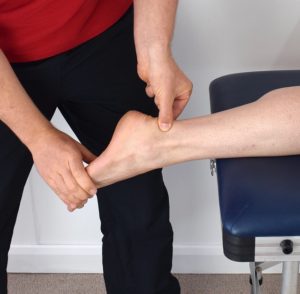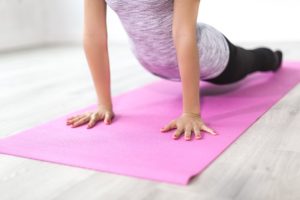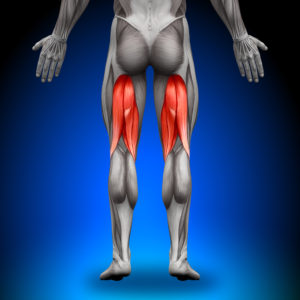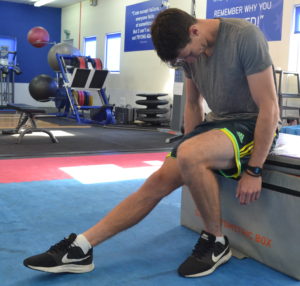It is no secret that sciatica exercises can dramatically improve recovery from an episode of sciatica. However, it isn’t uncommon for someone to find some sciatica exercises online which make their symptoms ten times worse! This article will aim to explain why this happens, and how to avoid it!
Aims of this post:
- To give you the tools you need to choose your own sciatica exercises
- To discuss the different types of sciatica exercises and which ones might work for YOU
- To teach you the one, simple golden rule that will help you pick your own sciatica exercises without any expert knowledge or experience!
Before we dive in, please be aware that we are part of the Amazon Affiliate programme. This page may contain Amazon affiliate links, so if you choose to purchase a product for your sciatica that we recommend through a link on this page, we will receive a small commission at no extra cost to you. This helps us keep Overcome Sciatica alive! Thank you for your support. Please be assured that we only ever recommend products that we truly believe can help.
How to Choose Your Sciatica Exercises
Choosing the appropriate sciatica exercises can be a real minefield. This statement stands even more so in the online space. How are you supposed to choose the right sciatica exercises?
Luckily, I have a very simple golden rule that I follow when recommending exercises for my clients with sciatica.
Before we cover the Golden Rule of sciatica exercises and why it works so well, let’s cover some of the main types of sciatica exercises. They can almost always be categorised into 4 brackets.
1 – Sciatica exercises for mobility
Sciatica exercises for mobility have the aim of restoring a loss in range of motion.
When someone suffers from a bout of sciatica, more often than not they will experience severe stiffness in the back and hips as a result, which can develop very rapidly.
Why does this happen? Well, it’s actually one of your body’s very clever automatic mechanisms causing this stiffness. I’ll explain how.
When we suffer from an injury, our brain sets into action to protect the affected area of our body.
Our brain signals for high levels of tension in the muscles around the problematic location. This has the effect of tensioning all of the muscles surrounding that area, which provides immobilisation – or lack of movement.
This serves two clever purposes. Firstly, it will prevent the body from moving in a way that is likely to further damage the injured structure.
Secondly, it will allow the “scaffolding” of new healthy tissue to be set down by the cells within the body so healing can take place.
While this is extremely helpful in the early stages of an injury, the brain can cause what is almost like a “malfunction” of this mechanism, causing the stiffness to remain long past the length of time that it needs to be there for.
These “malfunctions” are usually driven by pain and a psychological factor, like fear, and are extremely difficult to control.
Read all about how your brain can actually stop you from getting better HERE.
Sciatica exercises for mobility involve moving the stiff part of the body (usually the lower back in the case of sciatica).
You can perform sciatica exercises for mobility by bending forward, bending sideways, leaning back, rotating and any combination of these movements.
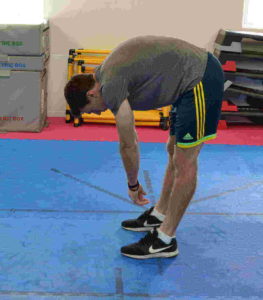
Even though these exercises can be very helpful, some people find that sciatica exercises for mobility actually make their symptoms WORSE.
This comes about as a result of not following the golden rule that I will explain later.
2 – Sciatica exercises for strength
Along with the stiffness effects that we get from an injury that causes sciatica, the brain stops the surrounding muscles from working as they once did.
This prevents the muscles from exerting as much force and we become weaker as a consequence of this.
Have you ever sprained your ankle? Notice how your ankle is suddenly too weak to take your body weight?
This is because your brain has effectively “shut off” the muscles in that limb temporarily to add to the immobilisation effect.
This effect almost always wears off over time, but if someone has been immobilised for a long period of time, their muscles may actually lose mass and become significantly weaker.
It doesn’t take a long period of disuse for you to lose muscle mass and strength – this detriment can occur in as little as a few days.
This fact gave rise to the phrase: If you don’t use it you lose it.
Because of this loss of muscle and strength, there is a need to include a strengthening element to sciatica exercises during rehabilitation.
However, it is very difficult for someone without any strengthening experience to pick and choose the correct sciatica exercises to regain that strength.
Do you lift weights?
Do you try to push your body weight?
Is it your leg or back that needs strengthening?
These questions are not exhaustive, and it’s no wonder that we make the wrong decision when choosing sciatica exercises when presented with all of the many hundreds of results on Google and YouTube.
Usually it is sensible to strengthen the back itself as well as the legs using sciatica exercises after a bout of back and leg pain, but this decision is very individual.
Are You Looking for RAPID Relief from Sciatica?
My good friend, colleague and fellow international sciatica expert, Dean Volk, has a brand new sciatica relief video course available – and I’m delighted to be an official sponsor!
Check out Dean Volk’s “Kicking Sciatica OUT of the Butt!” Online Pain Relief Course Here!
I can proudly recommend Dean and his course for sciatica sufferers – because I’ve seen his incredible results first-hand. You can check out his course (and get lifetime access to the videos and bonus content) by clicking HERE.
3 – Sciatica exercises for stretching
One of the most commonly searched terms by people with sciatica is “sciatica stretches”. There is a myth that there is “one magic stretch” or position that you can put yourself in that can cure sciatica forever.
I hate to break it to you, but this doesn’t exist. I’m sure you already knew this, but unfortunately some of the titles of the YouTube videos I have seen would have you believe otherwise!
Anyway, although they aren’t magic, sciatica exercises involving stretching do play a role.
In these exercises, it is usually the legs that are stretched in certain ways. The mechanism behind this is due to the fact that most of the muscles in the legs begin at the pelvis, where they attach.
If these muscles get tight (again, this can happen due to periods of immobilisation), they can exert a “pull” on the pelvis which can “tilt” our pelvis either forwards or backwards. If this happens, this can cause pressure on the lower back and load structures which aren’t meant to be loaded.
This can lead to back pain and consequently sciatica if you are loading so that a disc bulge presses on a nerve root within the spine.
Stretching the legs can sometimes reverse this “tilted” pelvis effect, which offloads the spine and therefore helps sciatica (in theory…)
However, I’ve seen countless patients who have read and understood this information, looked up some stretches online as one of their sciatica exercises, then carried out the stretches diligently… only to wake up the next day feeling miles worse!
Why is this happening?
Is it simply that people are stretching the wrong muscles? Not likely.
Is it that they are stretching the sciatic nerve, or inadvertently irritating a disc bulge with their well-meaning lower back or leg stretches? Probably!
This leads us onto our last category of sciatica exercises.
4 – Sciatica exercises for nerve flossing
“Nerve flossing” exercises are quite a difficult concept to form an image of in your head. However, they are undoubtedly effective and are a category of sciatica exercises which I regularly use with my clients.
The premise of nerve flossing sciatica exercises is that they work by “flossing” the affected nerve through the tight spaces in the back, leg and pelvis to free up movement of the structure, thus reducing irritation.
To picture how these sciatica exercises work, we need to first understand that the nervous system is one massive, interlinked structure.
Nerves start near your brain in the spinal cord, which runs all the way to the lower back, splitting off along the way to form the nerves that keep your body and limbs working.
Because of this fact, if you drop your chin to your chest, you put tension on the spinal cord in your neck. This will have a knock on effect further “down the chain”, increasing the nerve tension in your lower back and leg as well.
Usually, nerve flossing involves a gentle, rhythmic tensioning and relaxing of the affected nerve, by moving in a way that increases then decreases nerve tension.
Some of these movements require a lot of precision and coordination and are difficult to learn online through pictures or videos of sciatica exercises.
I think this is the reason that a lot of people find their symptoms worsen after they perform this particular category of sciatica exercise.
What’s more, there are several different types of nerve flossing that can be used for sciatica, just in case matters aren’t confusing enough already!
To read about the exact technique behind nerve flossing exercises, click HERE.
So how exactly do we choose the right sciatica exercises??
In order to simplify all of the complications, false guidance and strange techniques out there, I came up with one Golden Rule for choosing the right sciatica exercises.
It can help to guide selection of sciatica exercises in everyone and anyone.
The rule is this:
If the sciatica exercises you are doing make your pain worse either IMMEDIATELY or the NEXT DAY, you have either chosen the wrong sciatica exercises or you are doing too much.
It is really that simple.
Let’s look at why this advice is so effective, yet so simple.
To start with, it might help you to understand this explanation if you read my article on the role of the brain in the pain felt by someone suffering from sciatica HERE.
The brain is a complex but wonderful organ. It is heavily involved in the experience of pain, and has the potential to increase or decrease pain felt for any one given injury.
One thing that many people with sciatica suffer from is called “central sensitisation”. This comes about usually after an injury, and involves the brain amplifying pain signals associated with that injury.
This has the effect of prolonging and increasing the pain that someone feels from an injury.
Sometimes, central sensitisation can cause pain when there is in fact no injury whatsoever, which completely baffles doctors and other healthcare professionals all over the world.
While we don’t fully understand central sensitisation yet, we do understand that creating more pain in an area of the body that is already sensitised is the WRONG thing to do.
By following the golden rule for sciatica exercises above, no matter how centrally sensitised your back or leg is, if you are only performing sciatica exercises that don’t provoke your pain, you can’t make your central sensitisation worse.
Simple.
What’s more, there is evidence to show that the pain-free movement of an area affected by central sensitisation can help to calm down this hyper-sensitivity.
To read 10 common but harmful myths about back pain and sciatica, click HERE.
Other Reasons to Use The Golden Rule
One of the other reasons why the golden rule is so effective, is that it gives us permission to move our spines during a bout of sciatica (which is really important for recovery) while providing a universally-understood signal for when to stop.
This is one of the main problems patients I see have when given sciatica exercises by a physiotherapist.
They might feel some pain during these exercises and have no idea whether they should stop or push through it.
If you came to me with knee pain due to some arthritis, I would definitely recommend you try to tolerate at least some discomfort during exercise if possible.
However, this is not the case with sciatica, particularly if the cause of your sciatica is a disc bulge or prolapse.
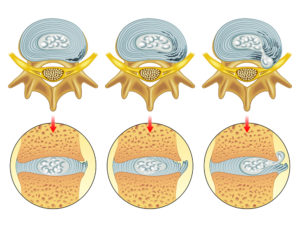
The reason for this is the fact that the pain we suffer in sciatica is caused by both a mechanical and chemical irritation of the offending nerve root.
We can settle down the mechanical irritation by avoiding certain movements and stretched positions.
However, the chemical irritation is much more difficult to control and is the reason why the pain in sciatica lingers for so long, even when we aren’t moving.
So, by following the Golden Rule of sciatica exercises, we are making the best attempt we possibly can at avoiding making this chemical irritation worse.
The rule implies that you need to reflect on how you feel the day after you complete your sciatica exercises, as well as on the same day. When you consider the day following sciatica exercises, this is the time period that a chemical irritation is likely to become apparent.
If you complete your sciatica exercises, feeling no pain at the time and the next day your pain hasn’t worsened either, chances are you’re choosing the right sciatica exercises, so keep on going!
Changes to tolerance of sciatica exercises over time
It is important to remember that just because one of your sciatica exercises made you worse this week, doesn’t necessarily mean it will make you worse next week.
Our bodies change over time, meaning that we need to keep trying the challenging actions repeatedly in order to test whether we are now able to do them without pain or not.
You should find that eventually, even the initially painful movements become possible again in the end.
Overdoing it
One thing to be mindful of is the tendency for us to find something that feels like it’s working, and then to completely overdo it with that once-helpful exercise.
That is why it is crucial that you build up the number of sets, reps and holds on each exercise GRADUALLY, to avoid irritating your sciatica in the ways we spoke about earlier.
A good number of repetitions to start off with is FIVE of any one particular exercise. See how you feel immediately after and on the following day.
If there are no signs of worsening symptoms, feel free to repeat that exercise the next day and possibly add a repetition to each set. Again, assess immediately after and the following day, and repeat the process.
Conclusion
Hopefully this post has given you a bit more confidence when it comes to choosing sciatica exercises that are going to be both comfortable and effective.
No one wants to pick sciatica exercises that make their symptoms worse or waste their time!
As always, thanks for reading!
Are You Looking for RAPID Relief from Sciatica?
My good friend, colleague and fellow international sciatica expert, Dean Volk, has a brand new sciatica relief video course available – and I’m delighted to be an official sponsor!
Check out Dean Volk’s “Kicking Sciatica OUT of the Butt!” Online Pain Relief Course Here!
I can proudly recommend Dean and his course for sciatica sufferers – because I’ve seen his incredible results first-hand. You can check out his course (and get lifetime access to the videos and bonus content) by clicking HERE.
The information on Overcome Sciatica should never be used as a substitute for medical advice from a doctor. Never put into action any tips or techniques from Overcome Sciatica without checking with your doctor first. Please see full terms of use here.





